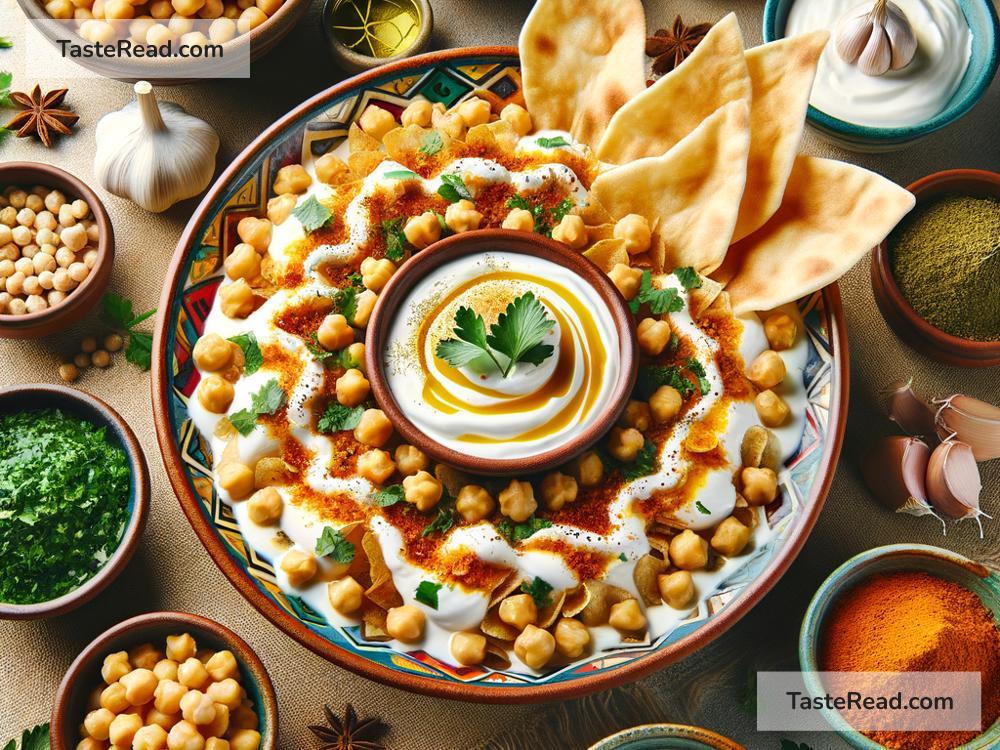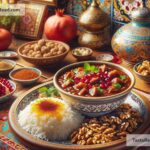Journeying Through the Intricate Layers of Middle Eastern Fatteh
When it comes to the world of food, few dishes can match the charm, versatility, and comfort of Middle Eastern fatteh. It’s a dish that feels like home, no matter where you’re from. The word “fatteh” comes from the Arabic term meaning “to crumble,” and it refers to one of the key components of the dish—crispy pieces of bread. But fatteh is much more than just crumbled bread. It’s a layered feast of flavors, textures, and history.
Let’s take a closer journey through this incredible dish, exploring its roots, layers, and the joy it brings to those who make and eat it.
What is Fatteh?
Fatteh is a popular dish in Middle Eastern cuisine, loved by people from countries such as Lebanon, Syria, Palestine, and Egypt. It’s typically served as part of breakfast or dinner because of its hearty and soothing qualities. This dish revolves around layering ingredients to create a dish that is as visually appealing as it is delicious.
While recipes vary by region and family tradition, fatteh typically features three main components: crispy bread, creamy yogurt or tahini sauce, and flavorful toppings such as chickpeas, meats, nuts, or spices. It’s often served warm, but you can also find cold versions that are refreshing in hot summer months.
A Bowl Packed with History
Like many Middle Eastern dishes, fatteh has deep cultural and historical roots. Some culinary historians believe its origins can be traced back to ancient times when leftover bread would be repurposed to avoid waste. Over time, creative home cooks transformed this humble practice into an art form, layering bread with other ingredients to build intricate dishes.
Fatteh is also a dish that reflects how food connects people. The ingredients in fatteh—such as bread, yogurt, and chickpeas—are basic staples deeply embedded in Middle Eastern diets. However, what makes it special is the unique way each family or community adapts the recipe to suit their taste. If you travel across the region, you’ll notice how each version of fatteh proudly carries the identity of its home.
It’s more than just a meal; it’s a story of tradition, resourcefulness, and the joy of sharing food around a table.
The Layers of Fatteh
Let’s break down the layers of fatteh and understand what makes them so unique:
1. The Base: Crispy Bread
The base layer of fatteh is made of crispy bread. Traditionally, pita bread is used, cut into small pieces and either fried or baked until golden and crunchy. This layer is important because it gives the dish its signature texture—a satisfying crunch that contrasts beautifully with the softer ingredients above.
Some recipes soak the bread in broth or olive oil to soften it slightly while still retaining some crunch. This is an example of how fatteh brings balance into every bite.
2. The Creamy Layer: Yogurt or Tahini
The next layer is usually a creamy sauce made from yogurt or tahini (ground sesame paste). Yogurt is commonly mixed with garlic and lemon juice to create a tangy, refreshing taste. In some versions, tahini replaces yogurt, especially in recipes from Egypt. Tahini adds a nuttier, richer flavor, making it just as irresistible.
This creamy layer plays an important role in tying all the other ingredients together, ensuring every layer is flavorful and moist.
3. The Protein: Chickpeas or Meats
A common topping for fatteh is tender chickpeas, which not only add protein but also blend beautifully with the flavors of yogurt and bread. For a heartier version, shredded chicken or lamb can also be added. Adding meat makes fatteh more suitable for special occasions or family gatherings.
Each region has its own variation. In Syria, you might find fatteh topped with beef chunks, while in Lebanon, chickpeas are king!
4. Crunchy and Flavorful Toppings: Nuts, Spices, and Herbs
To finish the dish, it’s garnished with toasted pine nuts, almonds, or cashews to add more crunch. Herbs like parsley give freshness, while spices like cumin, paprika, or sumac enhance the aroma and flavor. A drizzle of olive oil ties everything together. Sometimes, bits of butter are melted and poured on top for an extra layer of richness.
A Dish for Everyone
One of the best things about fatteh is its adaptability. Whether you’re vegetarian, vegan, or a meat lover, there’s a version of fatteh for you. People can play around with the ingredients based on what they have at home or their personal preferences. It can be made fancy for celebrations or simple for a quick meal, yet it always feels satisfying and comforting.
A Shared Culinary Experience
If you’ve never tried or made fatteh before, it’s an experience worth undertaking. Cooking fatteh is like assembling a puzzle, layering each ingredient with care and intention. Sharing the final dish with loved ones around the table adds to the joy.
Eating fatteh is just as special. Its layers require you to dig deep with your spoon, combining the crunchy bread, creamy sauce, and flavorful toppings into each bite. It’s a dish that invites you to slow down and appreciate every moment.
Conclusion
Fatteh is far more than the sum of its parts. It’s a testament to the creativity behind Middle Eastern cuisine, turning simple ingredients into a masterpiece. But more importantly, it’s a dish that speaks to togetherness, to the joy of sharing food and stories with family and friends. Next time you’re craving something warm, comforting, and full of flavor, consider giving fatteh a try. You might just discover a new favorite dish—and a deeper appreciation for the beauty of layered cooking.

